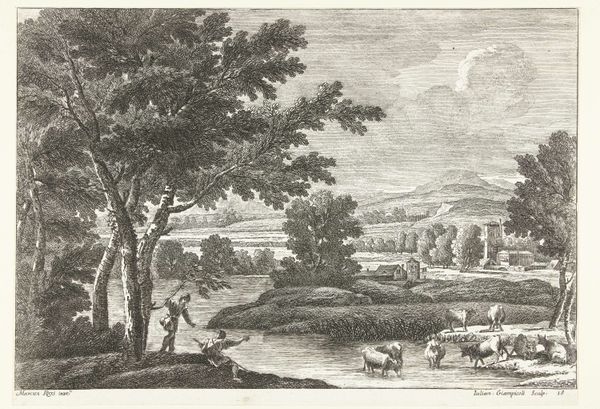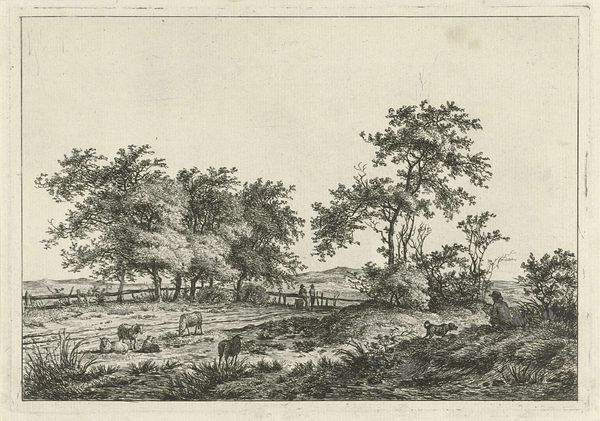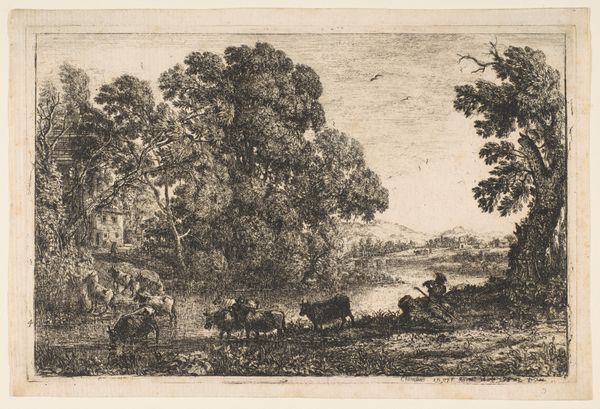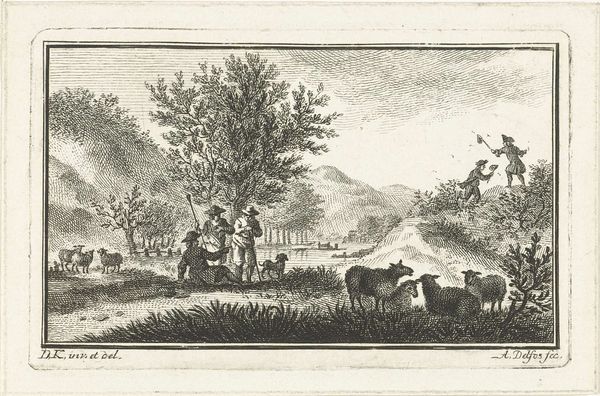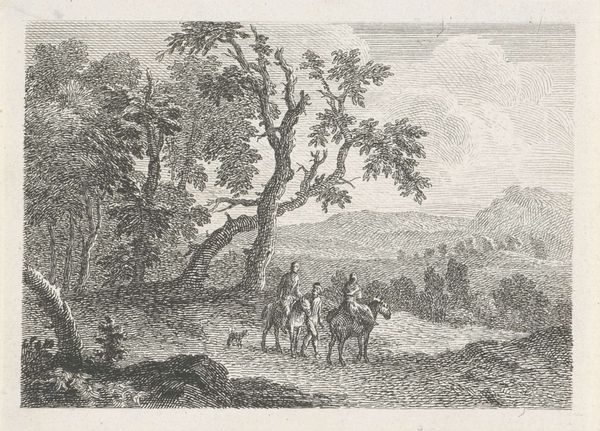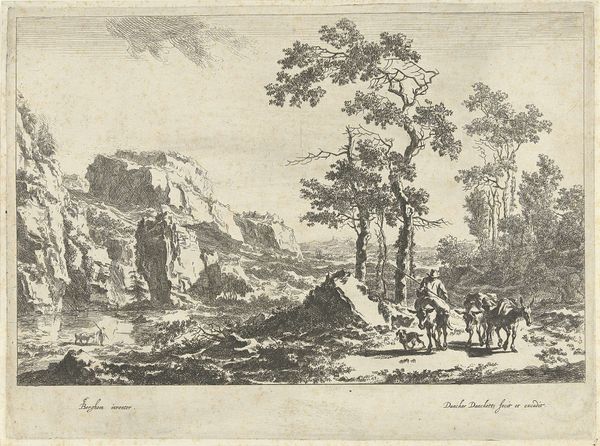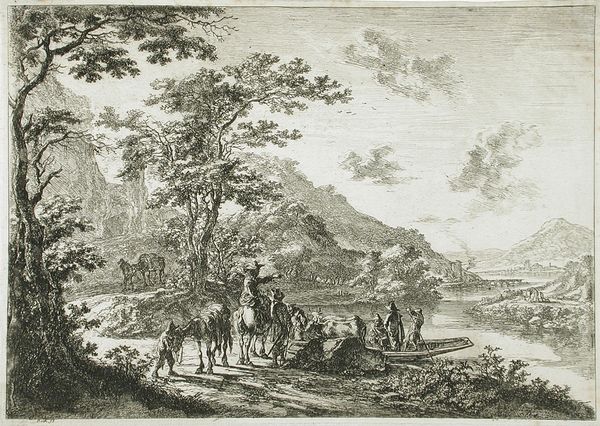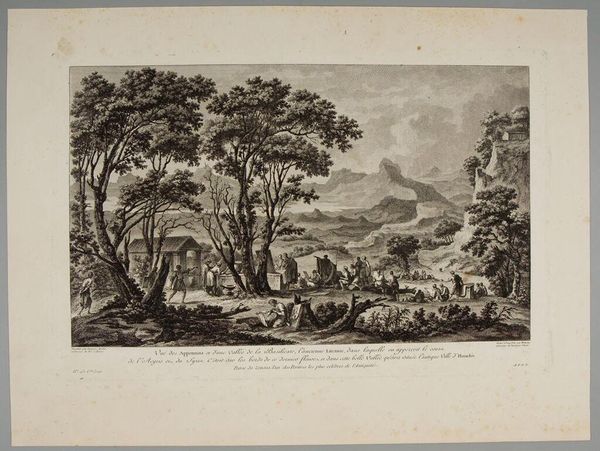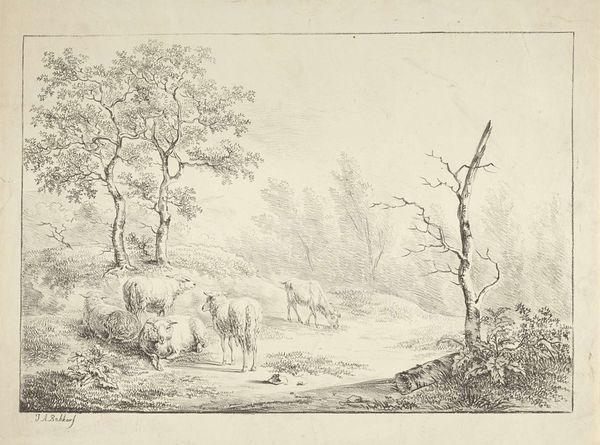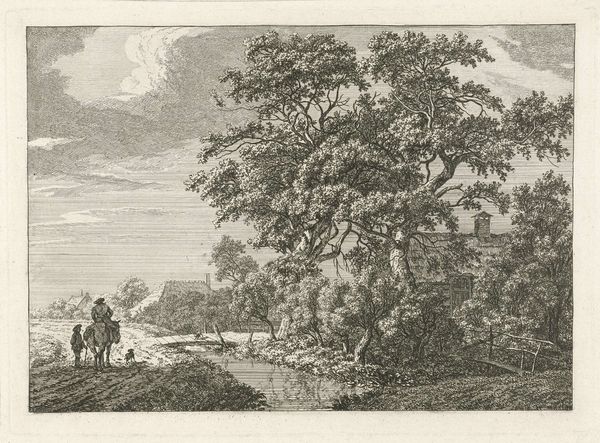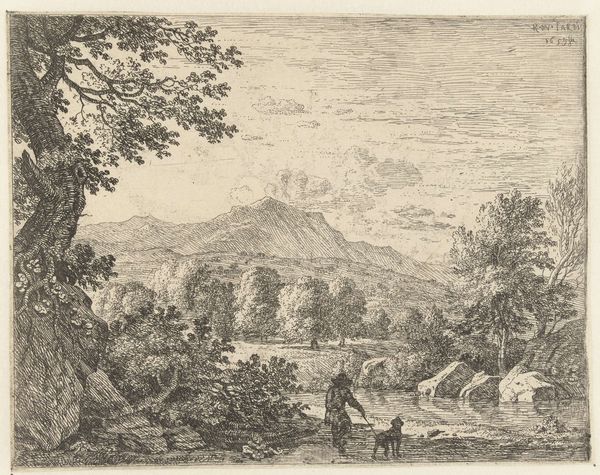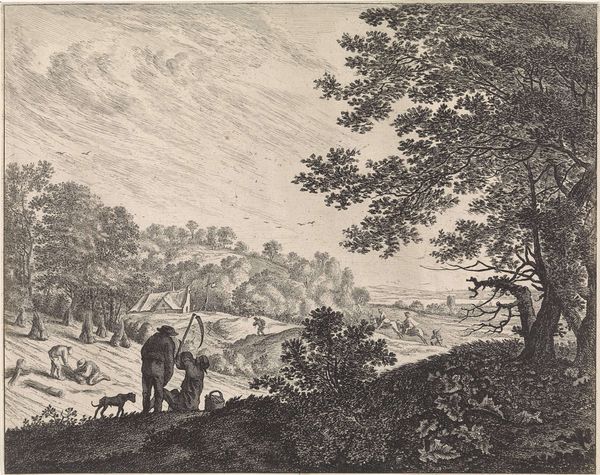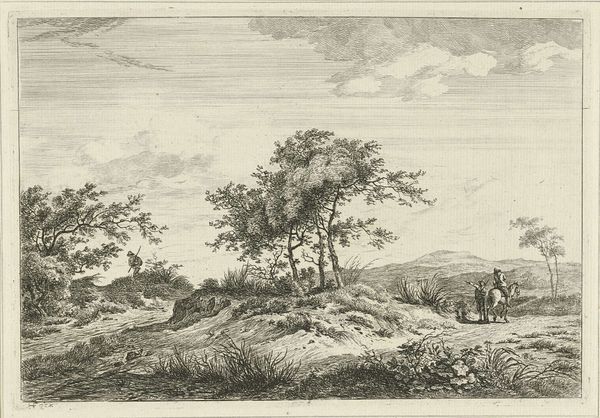
Dimensions: height 53 mm, width 95 mm
Copyright: Rijks Museum: Open Domain
Editor: This is "Landscape with Shepherd and Flock of Sheep," dating from sometime between 1741 and 1820, by Abraham Delfos. It looks like an ink drawing. What can you tell me about it? Curator: Let’s consider the social and material conditions surrounding this engraving. The labor involved in its creation—the meticulous handwork of the engraver translating a pastoral scene onto a metal plate—speaks to a burgeoning market for images in the 18th and early 19th centuries. How was this print consumed, and by whom? Editor: Well, given the multiple copies that exist, it seems it wasn't necessarily meant for a wealthy patron alone? Was it intended for mass consumption, perhaps? Curator: Precisely. Engravings like this one democratized art. Consider the materials: ink, paper, the metal plate itself. These were relatively accessible, enabling wider distribution and consumption beyond the elite circles who could afford original paintings. Who were the new audiences for art, and what kind of narratives were palatable to them? What sort of consumer culture facilitated their artistic desires? Editor: So, beyond the idyllic landscape itself, the artwork reflects shifts in the means of production and access to art in that period. I never considered engravings in terms of labor. Curator: It is essential. Furthermore, note the lines—the artistic decision. Does the mechanical reproduction, with its inherent potential for flawless duplication, still acknowledge, perhaps celebrate, artistic execution and, therefore, originality? This reveals that this pastoral landscape embodies larger socio-economic transformations impacting artistic production and consumption. It's about the materiality of culture as much as the image itself. Editor: That's given me a lot to consider – that art is intertwined with labour and materials, and the economics of the time! Thank you!
Comments
No comments
Be the first to comment and join the conversation on the ultimate creative platform.
